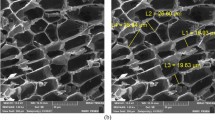Abstract
Background, Aim and Scope
At present, large-scale paper manufacture involves delignification and bleaching by elemental chlorine free (ECF) or totally chlorine free (TCF) processes. The wastewater is purified by secondary treatment (mechanical, chemical and biological) which removes most of the toxic substances from the discharge. However, we found residual toxicity in the high molecular (> 1000 D) matter (HMWM) of the discharge by test of the RET (reverse electronic transfer) inhibition. This fraction consists mainly of polydisperse lignin (LIG) and carbohydrate (CH) macromolecules. Structural units in these molecules are studied by pyrolysis gas chromatography / mass spectrometry (Pyr-GC/MS). In the present work, our aim was to find out those structural units which could explain the RET toxicity of LIG or CH molecules. We compared statistically RET toxicity values of the HMWM samples from treated wastewaters of pilot pulping experiments and intensity variation of the pyrolysis product gas chromatograms of these samples. This application is a novel study procedure.
Methods
Pyrolysis products (Py-GC/MS results) and inhibition of RET (reverse electronic transport toxicity) as TU50 and TU20 of HMWM (High Molecular Weight Material; Mw > 1000 D) were compared by multivariate statistics. The samples were from laboratory pilot stages of TCF (Totally Chlorine Free) and ECF (Elemental Chlorine Free) manufacture of softwood pulp. Py-GC/MS was done without and with addition of TMAH (Tetra Methyl Ammonium Hydroxide). The name and structure of each abundant fragment compound was identified from its retention time and mass spectrum compared to authentic reference compounds or literature. Four sets of Toxicity Units (TUs) and GC peak areas of the pyrolysis fragments were obtained. The data were normalized by division with LIG (lignin content of each sample). TU values were dependent and the fragment values independent (explanatory) variables in statistical treatments by SPSS system. Separate analyses of correlations, principal components (PCA) and stepwise multiple linear regression (SMLR) were performed from the four sample sets TCF and ECF with and without TMAH.
Results and Discussion
From the CH fragments, 2-furfural in TCF, and from the LIG fragments, styrene in ECF showed the highest probabilities to originate from source structures of toxicity. Other possible compounds in concern were indicated to be CH fragment 2-methyl-2-cyclopenten-1-one in ECF and LIG fragments 2-methoxy-4-methylphenol, 4,5-dimethoxy-2-methylphenol and 2-methylphenol in TCF.
Similar content being viewed by others
Author information
Authors and Affiliations
Corresponding authors
Rights and permissions
About this article
Cite this article
Paasivirta, J., Kukkola, J., Knuutinen, J. et al. Multivariate Statistics of the Pyrolysis Products of High Molecular Components in Pulping Wastewaters to Explain Their Toxicity (6 pp). Env Sci Poll Res Int 12, 375–380 (2005). https://doi.org/10.1065/espr2005.05.254
Received:
Accepted:
Published:
Issue Date:
DOI: https://doi.org/10.1065/espr2005.05.254
- pulping wastewaters
- principal components analysis
- multivariate statistics
- elemental chlorine free bleaching
- high molecular weight material
- EC50
- EC20
- reverse electronic transfer toxicity
- softwood pulp
- stepwise multiple linear regression
- totally chlorine free bleaching
- toxic units by 20% dilution (TU20)
- trimethyl ammonium hydroxide
- pyrolysis-GC/MS




